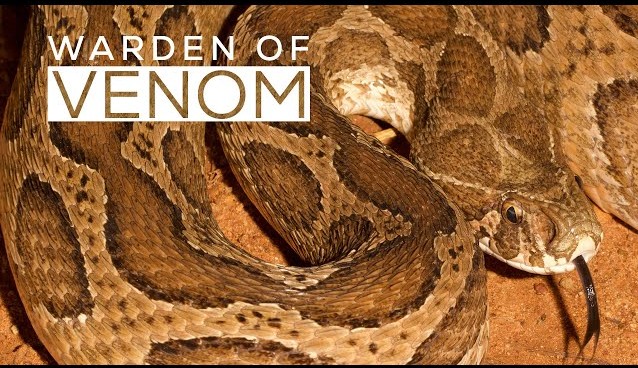
Follow WOWNEWS 24x7 on:

Across India’s diverse landscapes, from the lush rice fields of Assam to the arid terrains of Rajasthan and the outskirts of Bengaluru, a chilling sound known as the “Whistle of Death” is capturing widespread attention and sparking urgent safety awareness. This haunting hiss comes from the Russell’s Viper, one of India’s most venomous and deadly snakes, and its eerie whistle has turned into a viral alert, emphasizing the need for vigilance and informed response to reduce snakebite fatalities.
Key Highlights of the Viral “Whistle of Death” Phenomenon
The Russell’s Viper’s hiss is unusually loud and sharp, resembling the sound of a pressure cooker releasing steam. Unlike a typical snake hiss, it cuts sharply through quiet rural environments, particularly during monsoon season when ambient noise decreases.
This distinctive “whistle” serves as a biological warning signal by the snake when it feels threatened—its last audible caution before launching a venomous strike.
Russell’s Viper (Daboia russelii) is widely distributed in India and parts of South Asia. It ranks among the “Big Four” venomous snakes responsible for the majority of snakebite deaths in the country, alongside the Indian Cobra, Common Krait, and Saw-scaled Viper.
The viper thrives in ecosystems close to human habitation such as farms, grasslands, and suburban fringes, attracted by abundant rodent prey.
Its venom is hemotoxic, causing severe internal bleeding, blood clotting issues, kidney failure, muscle damage, and organ failure. A single bite can deliver more than enough venom to be fatal unless treated rapidly.
Recent months have seen a surge in reported snakebites attributed to the Russell’s Viper, especially during the monsoon when flooding drives snakes from their burrows closer to human settlements.
Viral videos shared by wildlife experts on social media show the viper’s intense hissing and warning posture, raising public consciousness about this sound’s life-or-death significance.
Experts strongly caution against approaching or attempting to catch the snake after hearing the hiss. The recommended response is to calmly and quickly distance oneself from the location.
Medical professionals emphasize immobility of the bitten limb and immediate transport to the nearest health facility for antivenom treatment. Traditional remedies and delayed treatment worsen outcomes.
Public health campaigns and community education are being heightened ahead of peak snake activity seasons to spread awareness about the Russell’s Viper’s warning signals and proper first aid.
Understanding the Russell’s Viper’s Behavior and Risks
When threatened, the Russell’s Viper assumes a defensive stance by coiling into an S-shape, lifting its head and upper body, inflating its body to appear larger, and emitting this loud hissing whistle as a stark warning. This vocalization acts as its “biological siren” signaling any potential threat to back off immediately or face an attack. Unlike aggressive pursuit, the viper’s strike is swift and reactive.
The snake’s adaptability to human-dominated areas increases the risk of accidental encounters, especially for farmers, children, and rural residents during the wet monsoon months. Barefoot walking, working in flooded fields, and poor visibility compound the dangers.
The venom of the Russell’s Viper is potent hemotoxin, capable of causing life-threatening systemic damage rapidly. Without quick medical intervention using species-specific antivenom, fatalities and permanent disabilities are common.
Viral Spread and Public Response
In recent weeks, footage capturing the “Whistle of Death” sound has gone viral on platforms like Instagram and Twitter, shared by wildlife photographers and educators. This social media attention has helped disseminate crucial safety tips and encouraged community-level readiness.
Healthcare workers and forest officials urge people to respect the warning sound and use it as a trigger to move safely away from the area. They warn against panic-induced running, as sudden exertion accelerates venom spread if bitten. The emphasis remains on prevention, quick recognition, and prompt professional care to reduce mortality.
Broader Implications and Prevention Measures
The rise in dangerous encounters with Russell’s Vipers has reignited calls for broader public awareness campaigns. These include educational programs in rural schools, distribution of snakebite prevention guidelines, ensuring availability of antivenom stocks in hospitals, and training local health workers in snakebite management.
Forest departments advocate habitat preservation and encourage coexistence strategies, discouraging harm to snakes while minimizing accidental human conflict. Community members are advised to use torches at night, wear protective footwear, clear vegetation around homes, and avoid handling snakes.
In summary, the Russell’s Viper’s chilling “Whistle of Death” has become more than just a snake’s hiss—it is now a powerful viral safety warning across India. Recognizing and respecting this sound can save lives. Increased public awareness, timely medical intervention, and community preparedness are vital to transforming this eerie warning from a death knell into a lifesaving alarm.
Source: Times of India; News18; Free Press Journal



